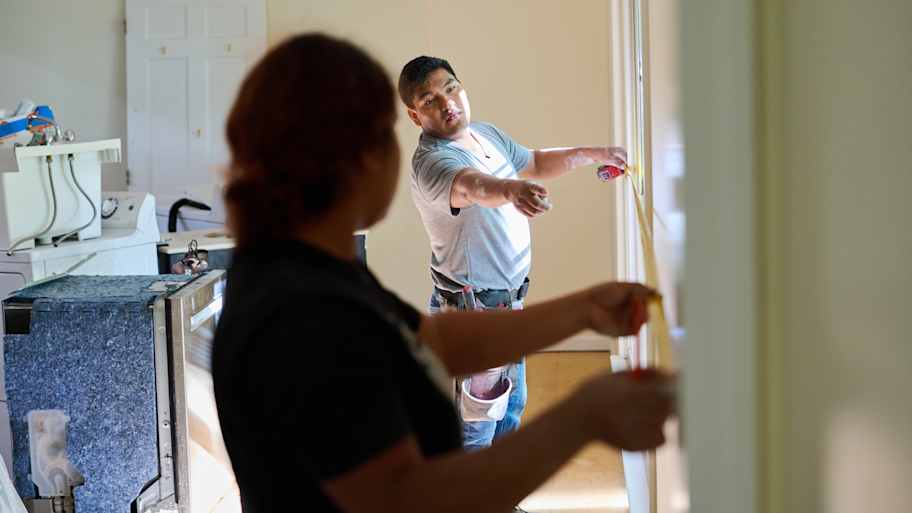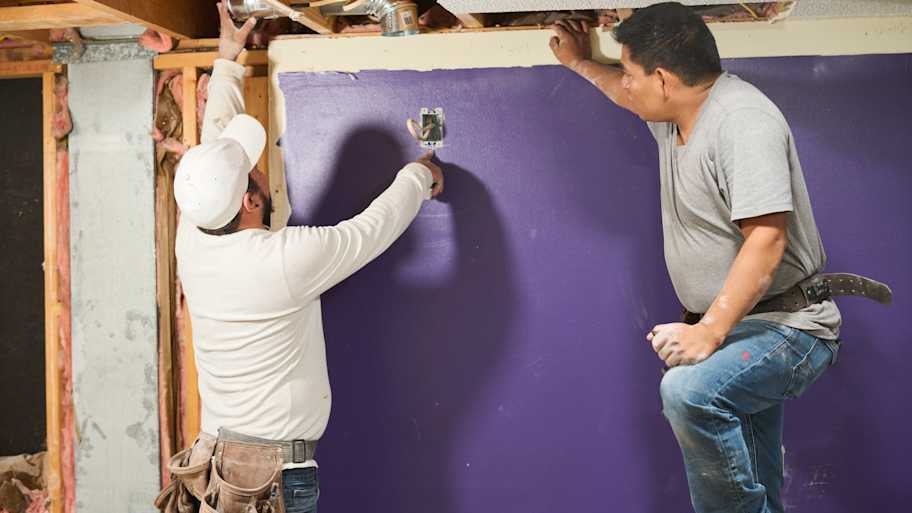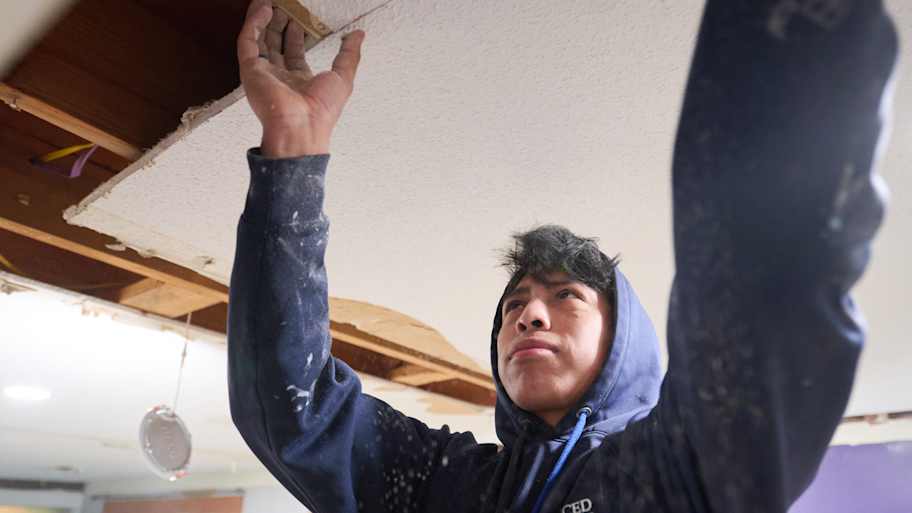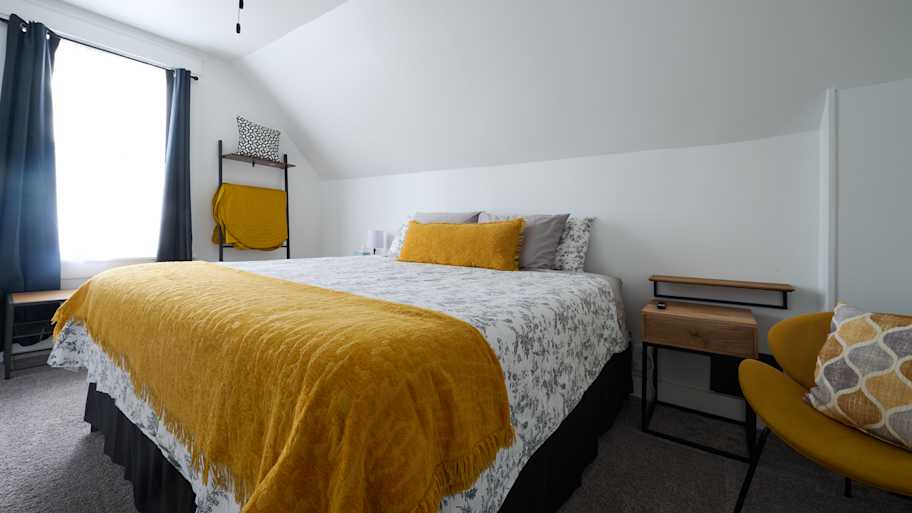Do I Need Plastic Behind Moisture-Resistant Drywall?
It’s a case of choosing to be safe over sorry


Moisture-resistant drywall can require a plastic vapor barrier, which prevents water vapor from condensing between walls.
Humid climates often require vapor barriers.
Climate, room humidity, and local building codes can determine the need for a vapor barrier.
Polyethylene sheets are the most common type of vapor barrier.
You’ve ordered the moisture-resistant drywall for your dream bathroom renovation, and you’re almost ready to begin the next phase of the project. But as you’re tallying costs against your budget, you may wonder if you need plastic behind that moisture-resistant drywall. Here’s how to determine whether you need to install plastic sheeting behind your drywall.
What Is Moisture-Resistant Drywall?
Moisture-resistant drywall, also known as greenboard or purple drywall, is specialized drywall that has a core treated for moisture resistance as well as a fiberglass mat or treated paper backing. These features help the drywall better resist water damage when exposed to high humidity levels, which are common in bathrooms, kitchens, laundry rooms, basements, and other high-moisture areas.
When shopping for moisture-resistant drywall, make sure to consider the differences between purple drywall versus green drywall. Keep in mind that purple drywall tends to have even higher moisture resistance but may come at a higher cost per sheet, depending on the size and how much the drywall sheet weighs.
Moisture-Resistant Drywall vs. Vapor Barrier
Moisture-resistant drywall is not the same thing as a vapor barrier. Moisture-resistant drywall is a specialized drywall that can better withstand moisture than standard drywall, making it a good choice for humid areas, like bathrooms and kitchens. It doesn’t keep water from passing through, but it lessens the risk that the drywall will take on water damage.
A vapor barrier is a layer that either goes between the studs and drywall or just behind the exterior wall of a house and is designed to keep any water vapor from condensing on colder areas between the walls. If the water vapor seeps in and begins forming condensation, that water could then encourage rot or mold growth.
Common Reasons to Add Plastic Behind Moisture-Resistant Drywall
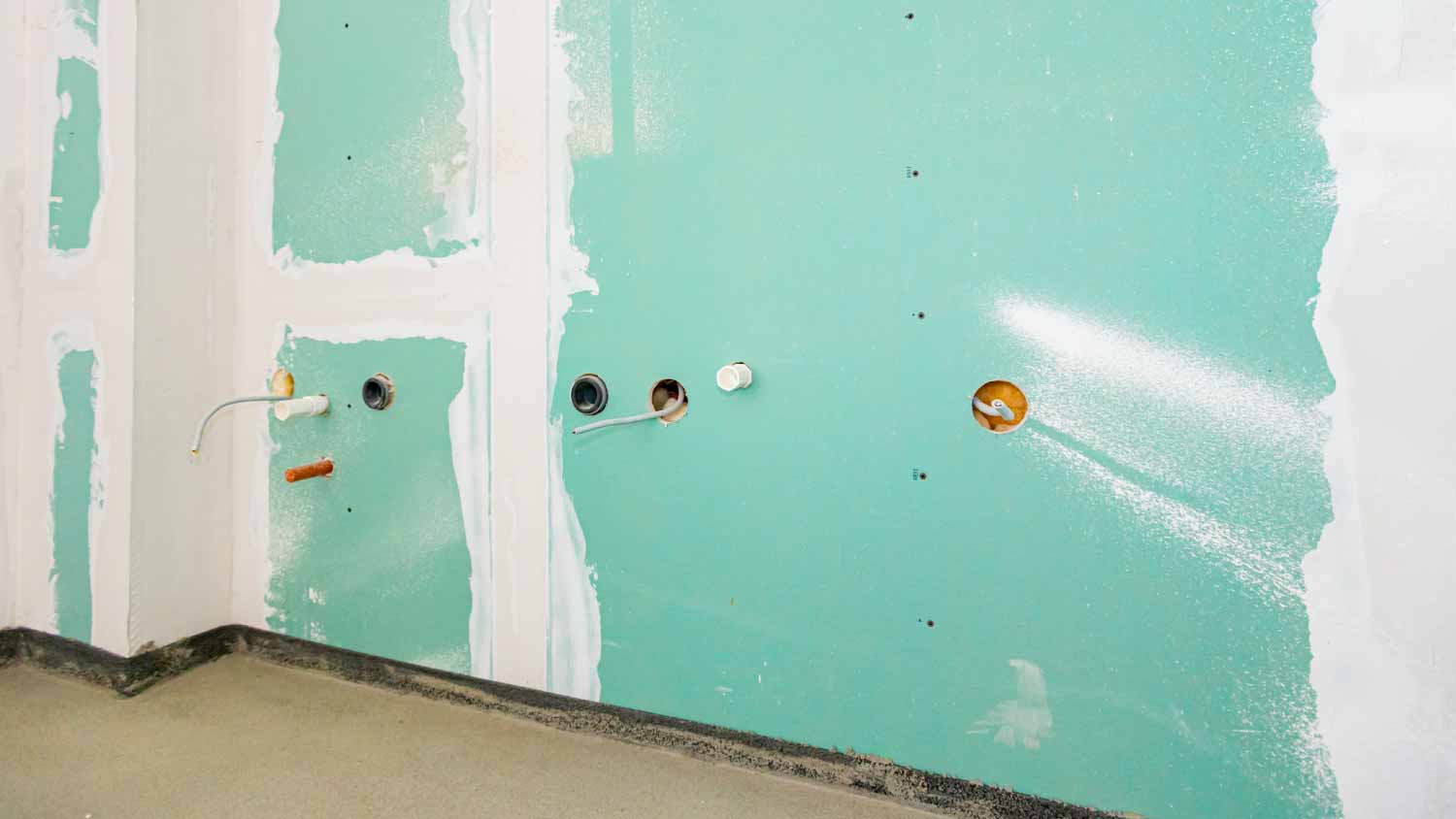
Not every layer of moisture-resistant drywall requires plastic behind it, but whether or not you should install a vapor barrier around the house or in a certain room will depend on a few factors.
Applying to High-Moisture Rooms
If you’re installing new drywall in a high-moisture room, you’ll need a vapor barrier to add extra protection against water damage between your walls. Rooms that may need plastic behind moisture-resistant drywall include bathrooms, kitchens, and basements.
During a bathroom or kitchen renovation, you may also wonder whether you can drywall over tile. Because of the high moisture in these rooms, though, it’s better to remove the existing tile, install a vapor barrier, cut and install cement board, and then add the moisture-resistant drywall.
Living in a Humid Climate
Homes in humid areas, whether the area stays warm all year or gets cold in the winter, need a vapor barrier to be better protected from moisture damage. If you live in a humid area that gets cold, the vapor barrier goes behind warmer interior walls. Homes in hot, humid areas often have a vapor barrier just behind the exterior walls.
In addition to protecting against moisture that could seep into the house, the vapor barrier can also give your home a little boost in energy efficiency.
Following Local Building Codes
The biggest factor when considering whether you need plastic behind moisture-resistant drywall is your local building codes. Local building codes are tailored based on climate factors, which are another main factor to weigh when installing drywall and a vapor barrier.
If your local building code requires a vapor barrier, then you should install plastic or another recommended barrier behind your moisture-resistant drywall.
What Type of Vapor Barrier to Use
Vapor barriers are made from plastic, foam sheet insulation, or builder’s foil, which is constructed with aluminum. For most purposes, a polyethylene plastic vapor barrier is the best choice. This material can withstand most climates and is common for residential use, especially because it has a lower cost than some other vapor barrier alternatives and is easy to install.
Where to Install a Vapor Barrier
Rather than placing the plastic vapor barrier directly against the moisture-resistant drywall, some pros recommend placing the vapor barrier behind an outside wall, especially if you’re in a humid area. This helps prevent moisture from becoming trapped against the drywall, which could lead to mold growth and rot.
Make sure to consult a drywall installer near you to determine whether or not you need plastic behind your moisture-resistant drywall and the best place to install this vapor barrier.
Frequently Asked Questions
While not every wall requires a vapor barrier, if you do need one and don’t install it, moisture can get between the walls of your home. This can lead to water damage from mold growth or rot, and the excess moisture could also attract pests, including termites, cockroaches, or ants.
A vapor barrier can last over 20 years, but they are vulnerable to pests, flooding, and other natural disasters. If your home weathers a storm or is treated for any pest infestation, make sure to have a drywall pro come check the integrity of your vapor barrier. It’s also important to have a pro install a vapor barrier since improper installation can lead to tears or leaks in the barrier that shorten its lifespan.
